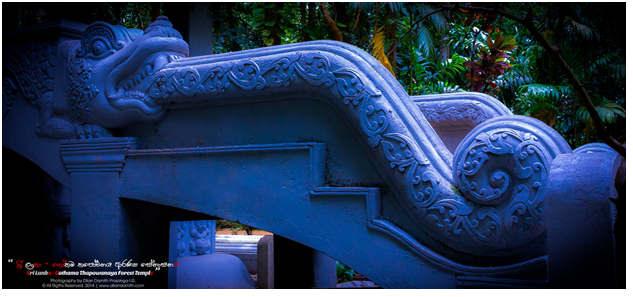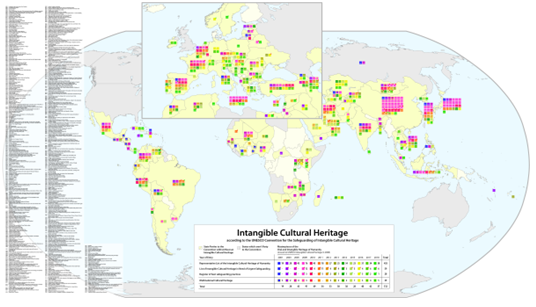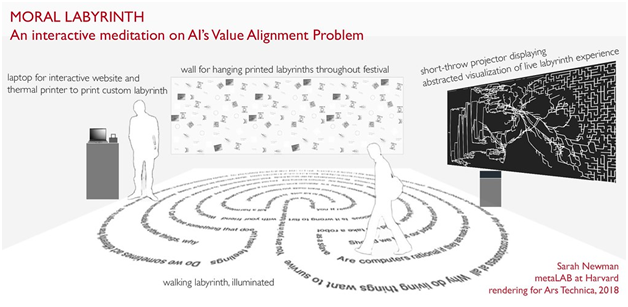Digital Innovation in Cultural Heritage: Impact, Opportunities, and Challenges
Question
Task: What is the impact of digital innovation on cultural heritage institutions, and what are the challenges they face in the digital era?
Answer
Blog
1.0 Introduction
In this growing world, innovation is needed in every sector to make things more effective for people. Digital innovation in cultural heritage is the use of digital technologies and tools to create, share, and preserve cultural heritage. It can include activities such as digitizing and sharing cultural artifacts, virtual reality experiences, data mining, 3D printing, and the application of artificial intelligence to cultural heritage research. Digital innovation in cultural heritage can help bring the past to life in new, creative, and engaging ways while preserving and protecting cultural heritage for future generations.
2.0 Impact of Digital Innovation on Cultural Heritage Institutions
2.1 Increased access to digital archives
One of the main ways to increase access to digital archives in digital innovation in cultural heritage institutions is to create digital access to the archives. This can be done by digitizing the archives, which involves scanning and digitizing any physical documents or artifacts that are part of the archives (Lykourentzou and Antoniou, 2019). Digital archives are possible by creating a digital platform or interface that allows users to search and access the archives. Additionally, institutions can create digital copies of any physical artifacts, such as audio recordings, photographs, and videos, and make them available online.
Another way to increase access to digital archives is to provide access to the archives via mobile devices. This can be done by creating an app that allows users to access the archive users are away from the institution, making it easier to access the archives when it is needed. Finally, institutions can also increase access to digital archives by providing access to digital resources providing access to digitized books, photographs and other materials that are part of the archives. In addition to that, institutions can provide access to digital versions of artifacts, databases and other digital resources that are related to the archives.

Figure 1: Heritage with Buddhist Culture
(Source: Wordpress.org, 2023)
2.2 Emergence of virtual museums
The emergence of virtual museums has been a key development in digital innovation in cultural heritage institutions. Virtual museums allow for a more accessible, interactive, and immersive experience for visitors to view digital objects and artifacts in an online space. It is able to explore these exhibits and gain an understanding of the culture and history of the institutions, often from the comfort of visitors' own homes (Terraset al. 2021). In addition, virtual museums enable heritage institutions to reach wider audiences and provide enhanced educational opportunities. As a result, visitors have become an important tool for preserving and promoting cultural heritage. Virtual museums can also provide a platform for collaboration, and exchange between cultural institutions, allowing them to share,compare exhibits, and even organize virtual events. In the end, virtual museums can also facilitate the digitization of cultural heritage materials needed to share with a larger audience, and preserved for future generations.
2.3 Decline of physical visits
The rise of social media has enabled people to connect with cultural heritage institutions online. Through platforms such as Instagram, Facebook, and Twitter, people can follow and interact with cultural heritage institutions from all over the world, without ever having to visit in person (Hammouet al. 2020). This reduces the need for physical visits and can lead to a decrease in revenue for cultural heritage institutions. One factor contributing to the decline in physical visits is the increasing availability of digital resources. Digital resources such as virtual tours, 3D models, and interactive digital exhibits can provide an immersive, educational experience without the need to visit a physical museum or heritage site.

Figure 2: Map of UNESCO Intangible cultural heritage
(Source: Wordpress.org, 2023)
The decline of physical visits to cultural heritage institutions is an increasingly pressing issue as digital innovation becomes more widely accessible. As digital technologies become more accessible and prevalent, people are becoming more reliant on cultural heritage information. This is leading to a decrease in physical visits to cultural heritage institutions, which can have a negative impact on visitors' resources and long-term sustainability.
3.0 Challenges Faced by Cultural Heritage Institutions
3.1 Increased competition with digital sources
Increased competition for attention
Cultural heritage institutions have to compete with digital sources for attention, in the form of online visitors, media coverage, and public donations (Trencheva and Zdravkova, 2019). As the digital world provides access to millions of sources, cultural heritage institutions must find innovative, creative ways to stand out and capture the attention of potential visitors.
Change in the way visitors interact with cultural heritage
Digital sources have changed the way visitors interact with cultural heritage by providing an alternative to traditional, in-person visits. Visitors can now access a variety of cultural heritage materials in digital form online, which has the potential to reduce in-person visits to institutions.
Increased pressure to keep up with technology
Cultural heritage institutions must keep up with the rapid advances in digital technology to remain relevant and attract new audiences (Psomadakiet al. 2019). Institutions must adopt new technologies in order to keep up with the changing needs of their audiences and remain competitive with digital sources.

Figure 3: AI Value Alignment Problem
(Source: Wordpress.org, 2023)
Extra costs associated with digitization
Digitizing cultural heritage material can be expensive, and often requires specialized expertise. Institutions must allocate significant resources to digitize collections and ensure that digital materials are made available in an accessible and usable format.
3.2 Struggle to remain relevant and engage visitors
Connect with local communities
By connecting with local communities, cultural heritage institutions can create strong relationships that must help to sustain and grow their relevance to visitors. This could include offering special programs and activities that cater to the interests and needs of local communities, as well as engaging with local cultural organizations.
Develop innovative and creative programming
Cultural heritage institutions should strive to create a variety of unique and interesting programs and activities to engage visitors (Vrettakiset al. 2019). This could include lectures, workshops, and other educational and entertaining events.
Leverage existing partnerships
Cultural heritage institutions should take advantage of their existing partnerships with other organizations and institutions to create even more engaging experiences for visitors. This could include collaborating on joint projects and activities or simply working together to promote one another's events and programs.
4.0 Conclusion
At the end of this research, it can be concluded that digital innovation has opened up new ways of engaging with audiences and has allowed institutions to take advantage of the latest technologies to provide more accessible, interactive experiences. The power of digital innovation has enabled cultural heritage institutions to reach and engage with their target audiences in ways that were not possible before. With the right tools and strategies, digital innovation can help cultural heritage institutions reach their goals and provide visitors with engaging, meaningful experiences.
Reflection
This research has been an eye-opening experience for me, as it has highlighted the potential risks that digital innovation can pose to cultural heritage institutions. Digital innovation has the potential to revolutionize the way we interact with and access traditional cultural heritage, but it also risks making these institutions redundant whether they do not adjust to the changes. Digital innovation has the potential to make many of the traditional activities of cultural heritage institutions obsolete, such as archiving, curating, and preserving artifacts. This could lead to a decrease in the importance of these institutions, as well as a decrease in their funding.
However, it is also important to note that digital innovation also presents many opportunities for cultural heritage institutions to remain relevant and to expand its reach and impact. As an example, it can be said that by utilizing digital tools, cultural heritage institutions can reach a wider audience, and make its materials more accessible and engaging. Overall, while digital innovation can be a threat to cultural heritage institutions, with the right approach it can also be used to its advantage. As technology advances, the traditional methods for preserving these artifacts may become obsolete. This risk of becoming "redundant" is real, but there is also the potential for digital innovation to create new opportunities to share and celebrate heritage.
Video script
1.0 Introduction
The digital age poses a challenge to cultural heritage institutions as it must adapt to a rapidly changing environment. As digital innovation advances, cultural heritage institutions are at risk of becoming redundant due to the impact on its traditional services and activities.
2.0 Main content of the Video
The nature of digital innovation could threaten the future of these institutions, as it must find ways to remain relevant in an increasingly digital world. This research paper must examine how digital innovation is impacting cultural heritage institutions and the risks it poses for its future. It also explores potential strategies for these organizations to address this challenge and remain relevant in a digitally-driven world.
Digital innovation has drastically changed the way cultural heritage institutions approach its operations. With the emergence of digital tools, these organizations face an increased risk of becoming redundant whether it does not adapt to the changes and use available technology to its advantage. This is especially true as digital technologies are capable of replacing certain manual tasks, thus requiring cultural heritage institutions to find ways to remain relevant and useful in a digitalized world.
In this discussion on the nature of digital innovation and its impact on cultural heritage institutions. Cultural heritage institutions have always been critical in preserving the shared cultural heritage and making it accessible to the public. However, with the rise of digital innovation, there is a growing concern that institutions may become obsolete.
The digitization of cultural heritage has made it easier for people to access this information from anywhere in the world, but it also raises questions about the future of physical cultural heritage institutions.
On one hand, digital innovation has opened up new opportunities for cultural heritage institutions. Digitization has made it possible to reach a wider audience and engage in new and exciting ways. For example, virtual tours, augmented reality experiences, and online exhibitions are now possible to attract a younger, more diverse audience.
However, digital innovation also poses a threat to cultural heritage institutions with the rise of online platforms. There is a growing risk of digital information becoming fragmented, lost, or even manipulated. This can undermine the value and authenticity of cultural heritage and may eventually lead to its destruction.
In addition, cultural heritage institutions face new challenges in terms of the skills and resources needed to keep up with digital innovation. It must invest in new technologies, expertise, and infrastructure to remain relevant in a rapidly changing digital landscape.
The nature of digital innovation poses both opportunities and risks to cultural heritage institutions. While digitization has the potential to democratize access to cultural heritage and engage a wider audience, it also creates new challenges in terms of preserving its authenticity and ensuring its survival.
It is up to cultural heritage institutions to balance these competing interests and ensure. The digital transformation of cultural heritage is done in a way that protects and enhances its value for future generations.
In today's digital age, technology is transforming the way it interacts with cultural heritage. Cultural heritage institutions play a vital role in preserving and presenting the shared cultural heritage to the public.
However, the rise of digital innovation has sparked a debate about the future of these institutions. Digitization also made cultural heritage more accessible and opened up new opportunities for engagement with audiences. In the case of virtual tours, online exhibitions, and augmented reality experiences it is attracting a wider and more diverse audience.
The abundance of digital information available online can lead to fragmentation and the loss of authenticity, which can undermine the value of cultural heritage.
Furthermore, the skills and resources required to keep up with the digital transformation can be a challenge for cultural heritage institutions.
Virtual museums can also provide a platform for collaboration, and exchange between cultural institutions, allowing them to share, compare exhibits, and even organize virtual events. In the end, virtual museums can also facilitate the digitization of cultural heritage materials needed to share with a larger audience, and preserved for future generations.
Digital innovation presents both opportunities and challenges for cultural heritage institutions. The process of digitization can increase accessibility and engagement with audiences; it also poses a risk to the preservation and authenticity of cultural heritage. Cultural heritage institutions need to find a balance between these competing interests.
Digital resources such as virtual tours, 3D models, and interactive digital exhibits can provide an immersive, educational experience without the need to visit a physical museum or heritage site.
3.0 Conclusion
Thank you for joining us for this discussion. Remember to tune in for more conversations on the impact of digital innovation on the world.
Reference
Journals
Hammou, I., Aboudou, S. and Makloul, Y., 2020. Social media and intangible cultural heritage for digital marketing communication: Case of Marrakech crafts.
Lykourentzou, I. and Antoniou, A., 2019. Digital innovation for cultural heritage: Lessons from the european year of cultural heritage. SCIRES-IT-SCIentificRESearch and Information Technology, 9(1), pp.91-98.
Psomadaki, O.I., Dimoulas, C.A., Kalliris, G.M. and Paschalidis, G., 2019. Digital storytelling and audience engagement in cultural heritage management: A collaborative model based on the Digital City of Thessaloniki. Journal of Cultural Heritage, 36, pp.12-22.
Terras, M., Coleman, S., Drost, S., Elsden, C., Helgason, I., Lechelt, S., Osborne, N., Panneels, I., Pegado, B., Schafer, B. and Smyth, M., 2021. The value of mass-digitised cultural heritage content in creative contexts.Big Data & Society, 8(1), p.20539517211006165.
Trencheva, T. and Zdravkova, E., 2019.Intellectual property management in digitization and digital preservation of cultural heritage.In EDULEARN19 Proceedings (pp. 6082-6087).IATED.
Vrettakis, E., Kourtis, V., Katifori, A., Karvounis, M., Lougiakis, C. and Ioannidis, Y., 2019.Narralive–Creating and experiencing mobile digital storytelling in cultural heritage.Digital Applications in Archaeology and Cultural Heritage, 15, p.e00114.
Website
Wordpress.org, 2023.Open verse, viewed on 04th February, 2023 from < https://wordpress.org/openverse/image/da11f981-f955-4945-8f16-132334d6f63a>












